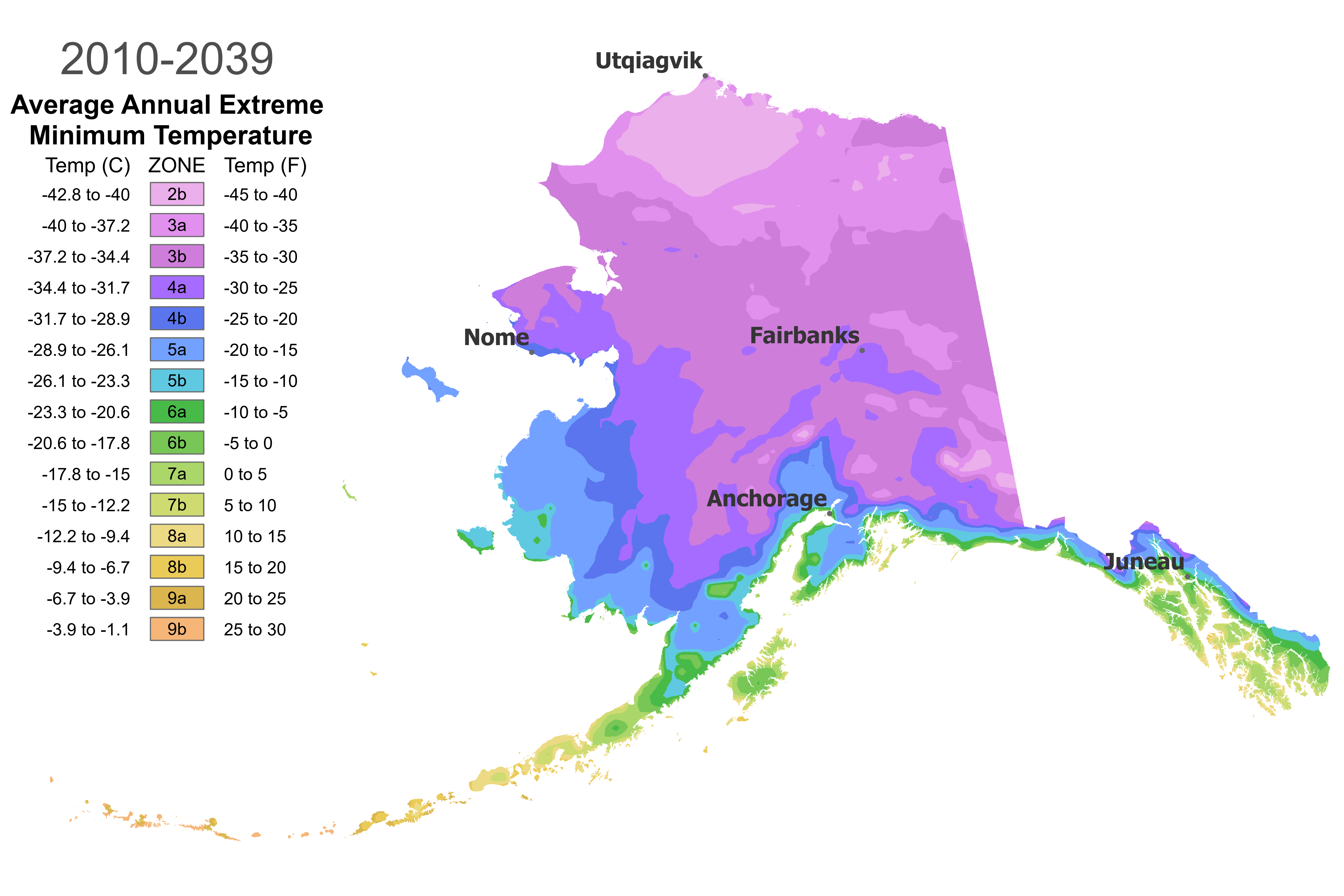The Alaska Garden Helper is a free online tool that delivers science-based knowledge and practical information to farmers, gardeners, ranchers, forest landowners, and Alaska Natives to help them adapt to climate change. The tool shares climate information relevant to plant growth for all communities in Alaska. The tool shows growing season start, length, and end for different threshold temperatures. Temperature thresholds include light and heavy frost temperatures, as well as temperatures important to cold and warm crop growth. Daily minimum temperature is displayed in a graph and includes historical and future projected data. Changes in growing degree days are also shown for historical and future projected data for different temperature thresholds. Maps of plant hardiness zones similar to USDA plant hardiness zones are also included. There is a map for the historical climate 1980-2009, and future projected climates for 2019–2039, 2040–2069, and 2070-2099.

The tool is meant to strengthen food security and empower local decision-making in a changing climate. The more farmers, ranchers, forest landowners, and Alaska Natives know about the impacts of climate change on food production and wild harvest, the better prepared they will be to adapt to those changes. This tool increases awareness of climate impacts and can be used to strengthen food security across the state.
The creation of this tool was part of a project led by researchers at the University of Alaska Fairbanks and the Department of Interior Alaska Climate Adaptation Science Center and informed by local Alaska farmers and other community experts, as well as the USDA Northwest Climate Hub.
Additional Information:
“The Alaska Garden Helper: A Web Tool Addressing Food Security and Climate Change” is a scientific publication that discusses the tool and its uses.
“Peonies in a changing climate: a case study,” works through the tool as it relates to peony production in Alaska.

